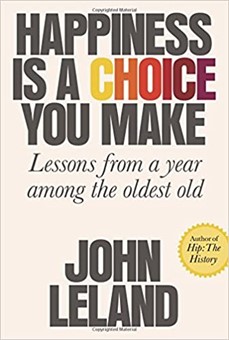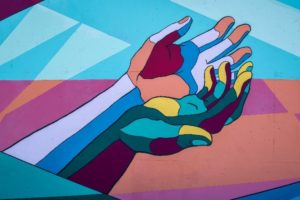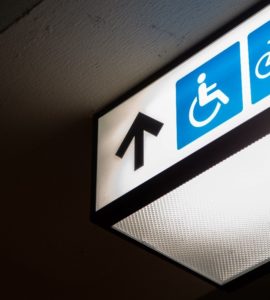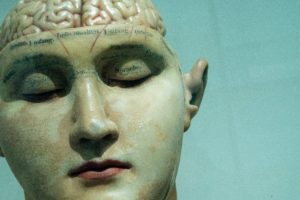Book Review of Jim Linnell’s Take It Lying Down: Finding My Feet After a Spinal Cord Injury
By Jamie Fleshman, SPT
“We step onto air and fall three feet to hard ground.”1(p16)
In Take It Lying Down: Finding My Feet After a Spinal Cord Injury, author Jim Linnell describes, with deep self-reflection and frank honesty, his experience of a catastrophic spinal cord injury and the two years of arduous recovery that followed. Linnell was a celebrated writer, teacher, actor, director, and dean of the College of Fine Arts at the University of New Mexico, looking forward to retirement with his wife Jennifer, when the accident happened. He and Jennifer had visited a small beach town in Mexican Baja with their family to celebrate one of their son’s 40th birthday. One night, they decided to take a walk on the beach. From the poorly-lit porch, Jim and Jennifer stepped off into darkness, expecting to find stairs leading to the beach. Instead, they found a hole in the ground left where landscaping had removed a bush just days prior. The fall left Jim paralyzed.
“I’m incomplete so I get to hope.”1(p32)
Soon after the incident, Jim is transported to Craig Hospital in Denver, Colorado—one of the country’s leading rehab centers for spinal cord injury. There he is shown an X-ray image of his injury and is told “it’s not much and too much at the same time.” 1(p31) A bit of bone is creeping into his spinal cord at the C4 level. Any more creep into the cord, and Jim would have likely experienced a complete spinal cord injury, rendering him permanently immobilized from the neck down. A seed of hope is sown from the explanation that since the injury is incomplete, functional recovery is possible. Not much is known as to how much he can recover, or how that will be best achieved; two years is the magic time limit his doctor gives him for attaining the greatest amount of recovery.
It is here at Craig Hospital that Jim also meets Meghan and Caitlin, a physical therapist and an occupational therapist respectively. Meghan and Caitlin help Jim navigate his new world as a quadriplegic and work with him to regain what mobility he can over the course of several harrowing months in preparation for his return home.
“I’m caught by love, friendship, blood, culture, and language, and by the need for conversation, stories, the presence of nature, and the pleasures of my senses. I am a figure held upright by woven cords stretching out in all directions, held taut by many hands.”1(p83-84)
The book chronicles Jim’s life in these two years—first detailing the accomplishments that take place at Craig, then describing the obstacles he encounters at home.
During inpatient rehab, Jim details events such as graduating from the oxygen tank and feeding tube, experiencing the regular routine of physical therapy and counseling, learning voice-recognition software, navigating the many harnesses and contraptions that allow him to practice walking, and re-learning basic functions such as how to turn a faucet, brush his teeth, and hold a fork or spoon.
Jim then relates with great honesty, deep feeling, and (sometimes dark) humor, his struggles to adjust to life back at home. His new challenges include maneuvering in a home not built for his injury, adjusting to having a home healthcare worker, and navigating the logistics of returning to work before his eventual retirement. He also sensitively records the effect of his struggle on his wife.
“There he is and is not. Is he lost or dead? Yet he is right there needing her. It makes grieving complicated.”1(p25)
A constant thread holding it all together is how Jim and Jennifer work to renegotiate the ways in which they communicate their feelings, thoughts, and practical needs. An injury of this magnitude is not a solitary domino in space; its existence is felt by any adjacent piece caught in the wake of its fall. Every domino in turn has its own effects felt in different directions, and Jim addresses the multiplicity of their experiences now by tying in their past with their present and the idea of a different future than they had planned.
A Woven Fabric of Words
Linnell’s writing draws upon his intricate knowledge of ancient Greek literature, mythology, drama, and philosophy. With such an extensive knowledge of and mind for the arts, it is no surprise that the style of writing is a fabric woven from the threads of many different cloths. Some poetry here, prose there, a stream of conscious and random thought after that, followed closely by the breakdown of a famous mythological tale, and theatrical expansions of common phrases sprinkled throughout.
His writing style is unique and offers a strong description of his experience that leads the reader to feel what he feels. His joints are not just stiff, they make him a “rusted tin man.”1(p59) He doesn’t just make faces when in pain, he is “a grimace monkey.”1(p59) His hands aren’t simply swollen, they feel “thick or fat, as if you’d been hanging upside down, a hunter’s trophy ready to bleed out.”1(p64) On the topic of now having a disconnect between his mind and body, Jim says: “Once your mind was conductor of the orchestra of sensations, speaker of the language of touch. Now the orchestra is full of empty chairs and appears like an old, scratchy black-and-white film with a bad soundtrack.”1(p64)
While his thoughts can be hard to follow at times, this may be exactly the end goal for Linnell’s style choice. The fallout from a spinal cord injury is not organized—and is personal to the core. How one experiences such an injury is steeped in a lifetime of accrued and formed identities. Navigating his injury leaves him grasping for meaning through a writing style he understands, which is theatrical and academic and passionate all at once. At one moment, Jim is describing the labor of walking through the house to sit in a plastic chair and admire the view outside, and in the next he is ruminating on Henrik Ibsen’s play Peer Gynt. If unfamiliar with the play or a bit rusty on Norwegian fairy tales, the reader may feel a bit lost. But this doesn’t make the references less important or call for the reader to skip the content. In the personally-derived story of recovery, the inner reflections of the author only enrich what would otherwise be loose thoughts for the reader.
An Indirect Inspiration
“There is a well-worn narrative that descends on those stricken by injury… Embedded in my struggle is a value that we want to believe exists… We want struggle, then failure, and then, slowly, something wonderful. Those who throw down their crutches collect a prize… Their character is greater. We don’t know what the hell it is, but we’re glad we don’t have to show it to get through our day.”1(p155)
There are several common disability tropes that play out in the media and do little justice for individuals living with a disability. Two common examples include: 1) the person as an inspiration because of their disability; and 2) the development of a person’s new powers through their experience of a disability. Although Linnell’s story is not exactly one of these tropes, it yet is the indirect positive compilation of them both.
“I am [not] able to move yet… yet. The yet is like a cartoon balloon of positivity above these young women’s heads. I will learn they expect me to fill the balloon above my own head with the same positive word.”1(p29)
Jim is an inspiration because of the work he, his family, and the many supporting actors involved put in to see that he makes the most progress possible in two years. His wife Jennifer sought out a Pilates instructor who could work with him when insurance was unable to cover their continuing rehab needs. Jim’s sons rigged a track through the house with a rope and harness, all made from parts of unused equipment, so he could practice walking as he had at Craig. Friends continued to encourage him to write about his experiences, understanding that it was therapeutic for him.
These accounts demonstrate that it is not Jim’s disability that makes him inspirational; it is the fact that this cast of characters, in tandem with his eye-on-the-magical-two-year-time-limit prize, are what led to his particular level of functional recovery and independence.
“My mind is the only thing not wrecked by the fall; it gains significance as hearing does for the blind.”1(p87)
Linnell was not new to writing. He was not new to analyzing plays or explaining theater or composing poetry to share his feelings or make observations. Without having experienced the injury, it is hard to say whether he would have walked quietly off into the post-retirement sunset with his love and a mojito in hand, or if he would have spent his time writing a book about life. To say that a new power (ie, writing this book) grew from the experience of a disability would be misguided, however. This identity as a writer grew substantially from his increased focus on it, but it was his long before the incident, and remained so afterwards.
A Sensitive Teaching Tool
“Whatever state my body is in, I still have a life to live. This is more complicated than physical rehabilitation. The question—how to live—is a question to ask and not avoid.”1(p146)
The past several years of research have elucidated the benefits of the humanities in medicine,2,3 arguing that it “can provide opportunities for students to enhance their patient-centered skills, such as empathy and observation, and become well-rounded physicians.”4 The value of Linnell’s book is found in his ability to bring the reader constantly into his state of mind and being in a way that a brief patient synopsis in a fabricated clinical scenario cannot. Len Jenkin says in the foreword that “this is not a medical book.”1(px) It certainly is not a medical book in the way that it will detail the injury with associated dermatomes and myotomes and their loss of function. However, it can add much to the education of medical students in the way that Jim details his experience navigating the emotional recovery of a sudden mind-body disconnect. He gives us a window into his psyche during the hardest and most intimate moments of his life; it would be a shame to ignore the value this would add to any medical professional’s understanding of the human experience.
“The talk is as useful as the physical work because I am drawn out of any hole I might sink in and I relearn the need for connection.”1(p60)
Jim describes a scene wherein his OT Caitlin is working with him on eating lunch. He feels frustrated by pain and poor range of motion. However, it is not by learning more techniques that he achieves any new success. He remembers that Caitlin has a fiancé, and asks her about him. Caitlin takes him through a story of having her fiancé over for dinner for the first time, although she is a self-proclaimed disaster in the kitchen. This story pushes Jim through; he says that “[a]fterward, I remember the laughs more than the pain and frustration.”1(p61) The book is full of examples such as this, where it is the patient-centered care and human connection in medicine that keep Jim focused on recovery and growth.
“It is a fool’s errand, trying to find yourself in a ravaged landscape, pursued for some transgression: greed or pride or sloth.”1(p25)
Jim’s is not a story of overcoming poor odds and fist-shaking at the fairness, or perception otherwise, of life. Although he does much overcoming, and a great deal of cursing, over the course of two years, he ultimately concludes that life is “cruel and capricious, with equal measures of goodness.”1(p179) He further posits “that one bad thing happens does not change the fact that one good thing happens… [t]here is no logic or belief that makes sense of this. There is only persistence, patience, and the wonder of our connection to others who miraculously love us as we love them.” 1(p179) Jim is not asking for pity here. He does, however, ask us if this persistence and patience and love is enough to keep us hanging onto life through the uncertainty of wins and losses. For him, it certainly was.
Q&A with Jim Linnell
Q: How did writing the book/engaging with the humanities affect your recovery?
A: The process of writing the book and my life spent teaching in the humanities as a theater professor couldn’t have been more central to my ability to face what happened and to construct a way through it. The writing part took two different significant forms:
The first was writing weekly posts I shared with a large group of friends and family. In these posts, I was playing with both a way to share my feelings with Jennifer and to explore what I did feel and how my connection to a past steeped in literature and performance framed my response and desire to reach out. I discovered I was fortified by my reading and learning from other writers who provided a way for me to construct a spiritual response to something that was cruel, capricious and amoral.
[The second was deciding to form a book.] After returning home and gaining significant function I returned to those posts and decided to make a book of [them]. They became reconceived, absorbed in the form of a book that served as a memoir of an accident and recovery but also of a specific and individual life. The task of writing it down and engaging with works I studied all my life helped me forge a new spine of spirit to fortify the physical spine I’d injured.
Q: What has life been like for you since you finished the book?
A: Being published is like a drug to the latent narcissism you have flowing in your veins. This results in ridiculous fantasies of being called up by Oprah or a morning national news show where I’ve seen multiple authors interviewed about their just-published books. The real fun is book readings where there are real people listening to what you have to say, asking questions, and even better, buying your book at the end.
The most meaningful book reading for me was returning to my hometown, the twin cities of Auburn and Lewiston, Maine. This is the place I grew up and where Bates College is located (in Lewiston) where I did my undergraduate work. My high school graduating class discovered I’d written the book and helped get the word out for my reading. Friends from college heard about it and came up to see me at the reading. It was an emotional event for me seeing all my friends. It felt like doing something for my family, now all passed, but whose lives were prominent in the twin cities. My wife Jennifer got to meet my high school girlfriend and my college girlfriend. I experienced a constant flipping of images in my brain that kept a pristine picture of important people in my life from the time I knew them and the dissonant live image in front of me some 60 years later.
Q: What advice would you give to clinicians who are treating patients during those first two critical years?
A: There is ample opportunity for success and terrible disappointment in these first two years after an incomplete injury. While the patient is certainly going on a roller coaster thinking, ‘one day maybe I will make some progress,’ and another day thinking, ‘I’m just totally screwed, this will never get any better.’ The [ideal] clinician [is one] that is agnostic about whether life is cruel or not, but focused on the present and the daily effort at repetition of exercises in a slow and steady expansion of effort—that doesn’t put the patient in a situation of failure but of appreciating without effort, nothing comes. The spinal-cord-injured body is so messed up that effort feels lousy most of the time and can easily be resisted. Face resistance with humor, evenness, and try not to indulge in the clichés of workout fanatics of no pain no gain. An SCI patient would gladly accept that cliché if after exercising our bodies felt terrific from endorphin rushes. But such patients live in a world where some version of pain is always present in some form. As I said in the book, talk and connection is a significant part of the experience with the clinician. If I like the person and I respect what they’re trying to do for me, I will try harder; that’s simple human behavior. If I feel badgered—or worse, shamed—then nothing good comes from that.
Q: What advice would you give to patients during those first two critical years?
A: Find every means to keep some form of rehab going after leaving the hospital. Of course, the role of caregivers is essential. The caregiver is not a clinician. They are invested in the patient either as a wife, partner, or parent, and their emotions are usually not dealt with by anyone, while the patient gets all the attention. A disgruntled and discouraged caregiver can undo much of what the clinician is trying to do or the rehab therapist. The patient has a role with the caregiver not to become a whiny mess that’s always asking for help when they should be patient trying to do as much for themselves as possible. The caregiver is trying to reconstruct their lives along with the patient, so as much responsibility as a patient can take for doing exercises on their own, expected by the PT, and giving back emotionally, so the caretaker doesn’t feel used and underappreciated, [is crucial].
I would encourage using whatever function has begun to appear in new and creative ways to keep telling a story that believes in the success of patience—and not arguing with what is asked of you by those trying to make you better. Participate and [don’t] begrudge. Your body is aware of what your mind is doing. [Being] furious at what doesn’t work helps occasionally, but your body needs a willing partner in your mind that wants to learn what you are now, not what you have been in the past.
References
- Linnell J. Take It Lying Down: Finding My Feet After a Spinal Cord Injury. Paul Dry Books; 2019.
- Graham J, Benson LM, Swanson J, Potyk D, Daratha K, Roberts K. Medical humanities coursework is associated with greater measured empathy in medical students. Am J Med. 2016;129(12):1334-1337. doi:10.1016/j.amjmed.2016.08.005.
- He B, Prasad S, Higashi RT, Goff HW. The art of observation: a qualitative analysis of medical students’ experiences. BMC Med Educ. 2019;19(1). doi:10.1186/s12909-019-1671-2.
- Thompson BM, Vannatta JB, Scobey LE, Fergeson M, Crow SM, et al. Providing context for a medical school basic science curriculum: the importance of the humanities. Med Teach. 2016;38(1):82‐87. doi:10.3109/0142159X.2015.1018878


 Happiness is a Choice You Make by John Leland
Happiness is a Choice You Make by John Leland 




 Member since 2019 | JM14274
Member since 2019 | JM14274


NO COMMENT